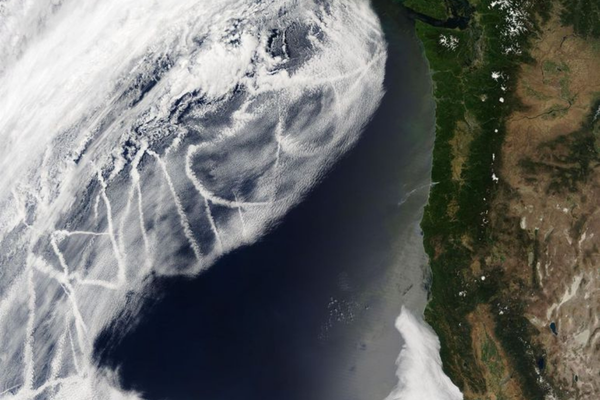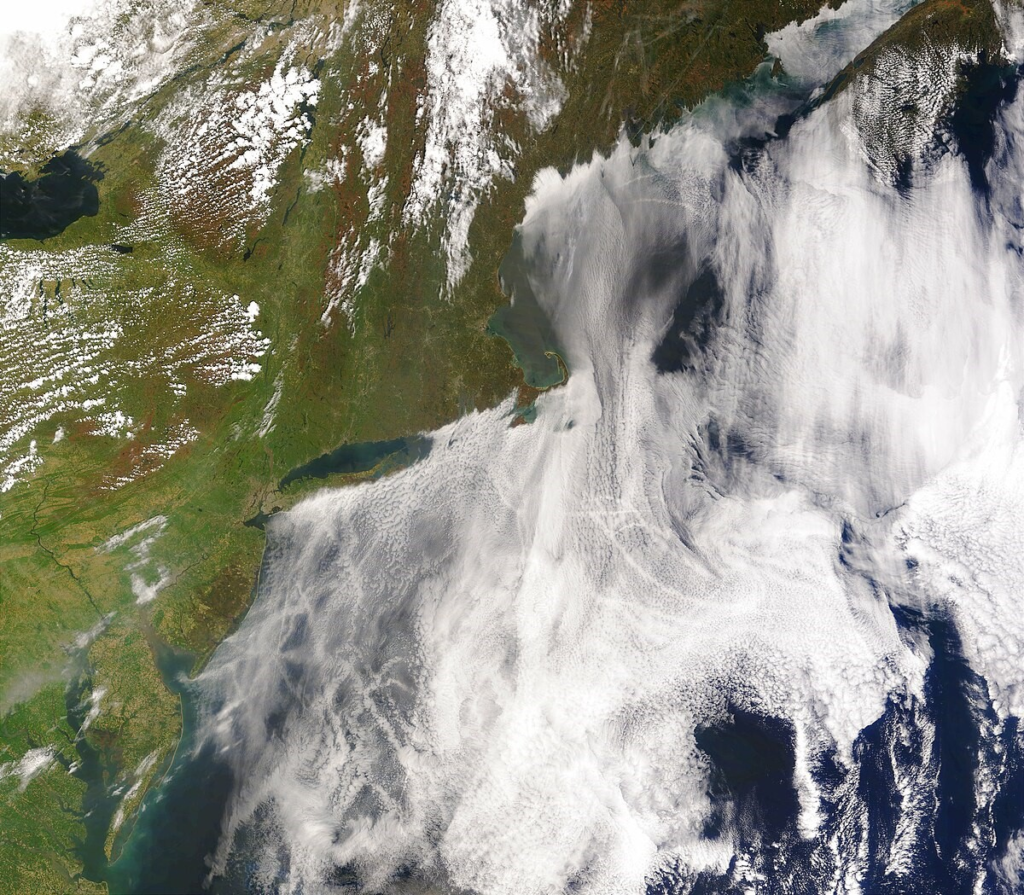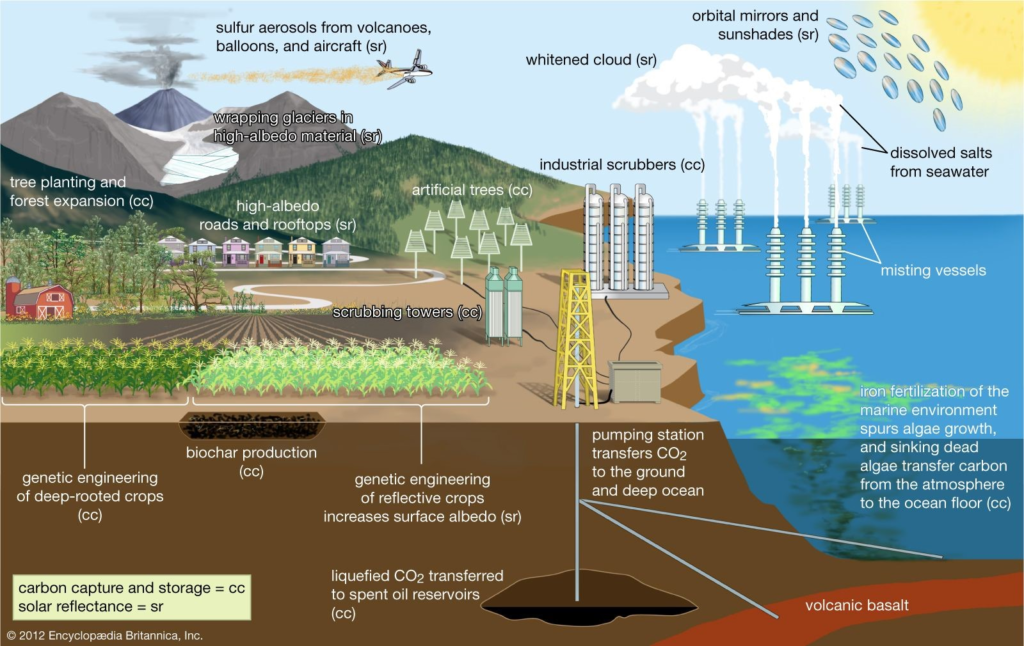Marine Cloud Brightening (MCB) is a geoengineering concept aimed at cooling the planet by increasing the reflectivity of clouds over the ocean.
What is MCB?
- MCB is a geoengineering concept aimed at cooling the planet by increasing the reflectivity of clouds over the ocean.
- This technique involves spraying fine particles, typically sea salt, into low-lying marine clouds.
- The particles increase the clouds’ albedo (reflectivity) by creating more cloud condensation nuclei, which leads to smaller and more numerous cloud droplets.
- These denser and whiter clouds reflect more sunlight back into space, thereby reducing the amount of solar energy reaching the Earth’s surface and potentially cooling the planet.
What is Geoengineering?
- Geoengineering, also known as climate engineering, refers to the deliberate large-scale intervention in the Earth’s climate system, with the aim of combating or mitigating climate change.
- The concept is based on technological and scientific methods intended to directly alter the Earth’s environment, particularly to reduce the effects of global warming caused by greenhouse gases.
Types of Geoengineering:
[ref- britannica]
- Solar Radiation Management (SRM): Solar Radiation Management involves techniques aimed at reflecting a small percentage of the sun’s light and heat backinto space to reduce the Earth’s average temperature. The main methods include:
- Marine Cloud Brightening: Enhancing the reflectivity of clouds over the oceans by spraying sea salt particles into the atmosphere.
- Stratospheric Aerosol Injection: Emulating volcanic eruptions by injecting sulfur dioxide or other reflective particles into the stratosphere to reflect sunlight away from Earth.
- Space-based Reflectors: Proposing the placement of mirrors or other reflective objects in space to deflect sunlight.
- High-albedo Crops and Buildings: Modifying the surfaces of roofs, pavements, and crops to reflect more sunlight.
- Earth Radiation Management (ERM): Allowing heat to escape into space to offset the negative effects of climate change by thinning cirrus clouds.
- Carbon Dioxide Removal (CDR): Carbon Dioxide Removal focuses on techniques that reduce the atmospheric concentration of CO2 by removing CO2 from the atmosphere and storing it. The primary techniques include:
- Ocean Fertilization: Adding nutrients like iron or phosphorus to the ocean to boost phytoplankton growth, which absorbs CO2 through photosynthesis.
- Afforestation and Reforestation: Planting new forests and restoring old ones to absorb CO2 through photosynthesis.
- Bioenergy with Carbon Capture and Storage (BECCS): Combining biomass energy generation with carbon capture and storage technologies.
- Direct Air Capture (DAC): Using chemical solutions to directly absorb CO2 from the ambient air and subsequently sequester it.
Concerns associated with Geoengineering:
- Unintended Consequences: Large-scale alterations may lead to unforeseen and harmful impacts on weather, ecosystems, and agriculture.
- Ethical and Governance Issues: Geoengineering raises questions about decision-making, risk distribution, and equity, with concerns over who decides and who bears the consequences.
- Moral Hazard: Depending on geoengineering could reduce efforts to cut emissions, diverting attention from necessary climate action.
- Geo-Political Tensions: Implementing geoengineering could spark conflicts over control, access, and liability among nations with differing interests.
- Long-term Impacts and Irreversibility: Geoengineering interventions may have irreversible effects on the planet’s systems, with consequences for future generations.
- Uncertainty and Risk: The effectiveness and side effects of geoengineering methods are uncertain, posing risks to climate, ecosystems, and societies.
- Social Acceptance and Perception: Public skepticism and concerns about large-scale manipulation of nature raise questions about governance, trust, and social acceptance of geoengineering.
Ref:Source
| UPSC IAS Preparation Resources | |
| Current Affairs Analysis | Topperspedia |
| GS Shots | Simply Explained |
| Daily Flash Cards | Daily Quiz |




